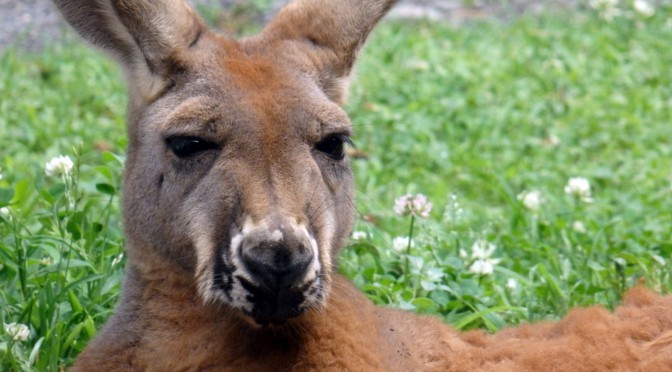Physical Description
There are around 200 different species of poison dart frogs, and they are known for having a wide variety of different, brightly colored patterns. They can range in size from 0.75 to 1.5 inches in length.
Predators
Because of a built-up resistance to the dart frog poison, their only natural predator is the fire-bellied snake.
Lifespan
Poison Dart Frogs live an average of 3-5 years in the wild, but they have been known to live 10-20 years in human care.
Reproduction
Breeding times depend on rainfall, but they can typically breed year-round. Rituals vary by species but most include an elaborate courtship that can last several hours. The female will lay clutches of eggs ranging from 1-30 eggs in a moist environment, and both parents typically help the eggs stay moist until they hatch in 2-4 weeks. Some parents will then carry their tadpoles on their backs to a water source where they will stay for the next 6-12 weeks until their metamorphosis is complete.
Fun Facts
- Poison Dart Frogs earned their name because native people were known to rub blow darts and arrowheads on the three most toxic species of dart frogs in order to add poison to their weapons.
- Their bright colors serve as a warning to let predators know they have poison and should be avoided. They are unable to produce their own poison and instead use toxins from the insects they eat which have consumed plants with toxins.
Conservation Messaging
In our Reptile and Amphibian (RAD) center you will find many different reptiles and amphibians including venomous and poisonous species of snakes and frogs. Many of these animals fall victim to habitat loss in the wild. Many of the species here are found in South American habitats which are subjected to deforestation, damming of rivers, water pollution, and poor agricultural and management practices.











